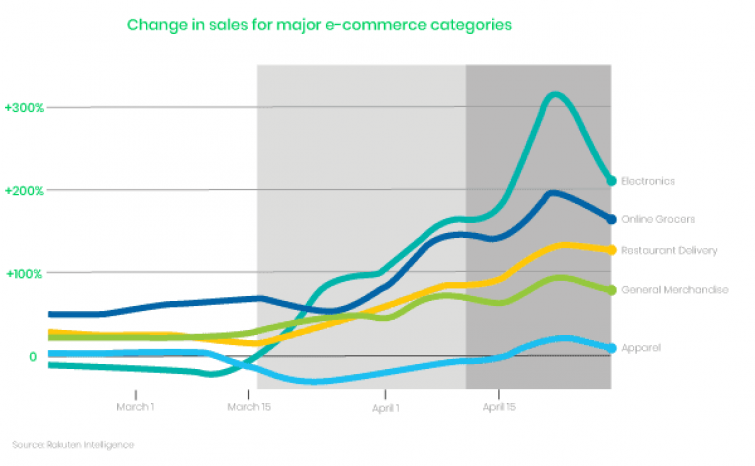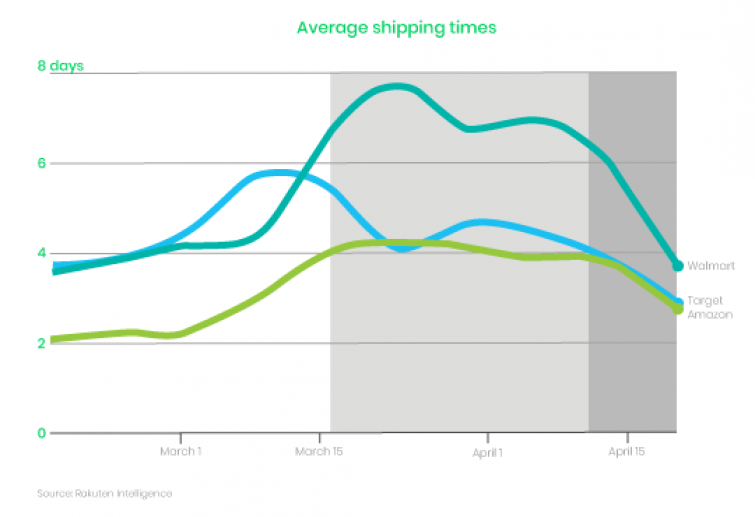Think Fast: Fulfillment Center Planning Amid E-Commerce Chaos

E-commerce was already eating away at brick and mortar retail sales over the last decade. Since the onset of COVID-19, online consumer habits have accelerated this shift and forced retailers to adapt, including rethinking their fulfillment center and supply chain planning. A large portion of this growth is from customers who were first-time e-commerce shoppers engaging with new brands. However, companies hope that a lot of these customers will become loyal consumers who return regularly based on superior user experience. Further fueling the constant trend in higher e-commerce volumes and supply chain optimization is an expectation for increased convenience, optimized user journeys, and rapid fulfillment.


New Challenges in Fulfillment Center Planning
It is no surprise that the initial demand shock from COVID-19 stressed the fulfillment center and demand planning processes for many retailers — evident by increased shipping times (as demonstrated in the graph above). It resulted in backlogs throughout supply chain operations, which are now being pushed to the limit. Retailers were already trying to improve their fulfillment processes by speeding up turnarounds, adding more Fulfillment Centers (FCs), and adopting automation wherever possible. But these are strategic decisions that take time and capital investment before they bear any fruit.
In the meantime, FC managers are tasked with meeting these changing consumer demands — all while still achieving growth expectations and maintaining high-service standards without increasing labor costs to remain competitive. The FC manager’s near-term decisions have significant implications on whether the retailer is able to navigate shifts in customer behavior as they continue to respond to both unplanned and planned demand fluctuations next month, next year, and beyond.
Optimizing Fulfillment Center Operations
Finding the sweet spot between service and labor cost in a volatile demand environment is now a chronic question facing FC managers around the world. They currently lack the sophisticated capabilities to do sophisticated scenario planning and to make data-driven decisions that capture the complexity of their operations in any meaningful way.
Even a simple question like, “What is the expected backlog during a given week?” requires them to manually account for the demand forecast, while productivity differences across various worker types and available human resources or machine capacity needs these projections to address the cumulative backlogs at each inbound and outbound step each day of the week. On top of this, when they do anticipate a problem (say demand is expected to increase by 300%), they need to quickly come up with strategies to mitigate their backlogs. This requires answering operational questions such as:
- What if we stop returns processing during periods of high demand?
- Can we reduce temp labor needs if we limit the 3-day service to only loyalty cardholders?
- If one of two FCs has to shut down due to COVID-19 infections, can we rely entirely on my other FC? What are the best service levels we can achieve under these circumstances?
Bringing Agility to Fulfillment Center Operations and Planning
In short, FC managers need a new set of capabilities to compete in a constantly disruptive e-commerce environment. Using modern digital supply chain technologies to empower them and help understand the impact of their decisions on service and cost within the e-commerce supply chain can help drive growth even in times of increased pressure. A winning combination is pairing your own operational expertise with the power of data and supply chain analytics. This can drive new efficiencies and help find optimal solutions amid challenging times. A relevant example of such an efficient pairing is using technologies like Google Maps during your fulfillment processes.
Google Maps does an efficient job of crunching all your routing and real-time traffic data for all your distribution tasks, but it also gives you the ability to constantly optimize according to different criteria depending on the situation you are in. It allows you to evaluate how much time it would take when adding stops (e.g. a coffee shop or a gas station). Technologies like Google Maps enable today’s FC managers to build scalable, data-driven, decision-making applications. The more focused on data FCs become, the more empowered they are to achieve the required service and delivery KPIs the business expects.
Responding to Fulfillment Center Demand with Coupa
To succeed in a new hyper-competitive e-commerce market, FC managers need to update their tools and technologies. The current levels of competition (combined with changing consumer expectations) are putting traditional models under immense pressure. The best way to succeed is by embracing digital transformation and adopting any technology that can help speed up the entire logistics and supply chain processes. By leveraging real-time analytics and making the requisite changes quickly, FC managers can keep up with demand and forecast effectively, helping them stay ahead of the curve.
Coupa’s Supply Chain App Studio can quickly deploy solutions that assist FC managers as they strive to understand their current operations, design new supply chain solutions, and achieve the outcomes required to grow the business. The ability to connect key data to your operations will provide the insights you need to keep up with volatile consumer demand. Coupa supports all your data-driven decision support needs and quickly enables planners, analysts and business users to respond to changes, streamlining daily decisions and operations through purpose-built applications targeting your specific problem within your specific organization.